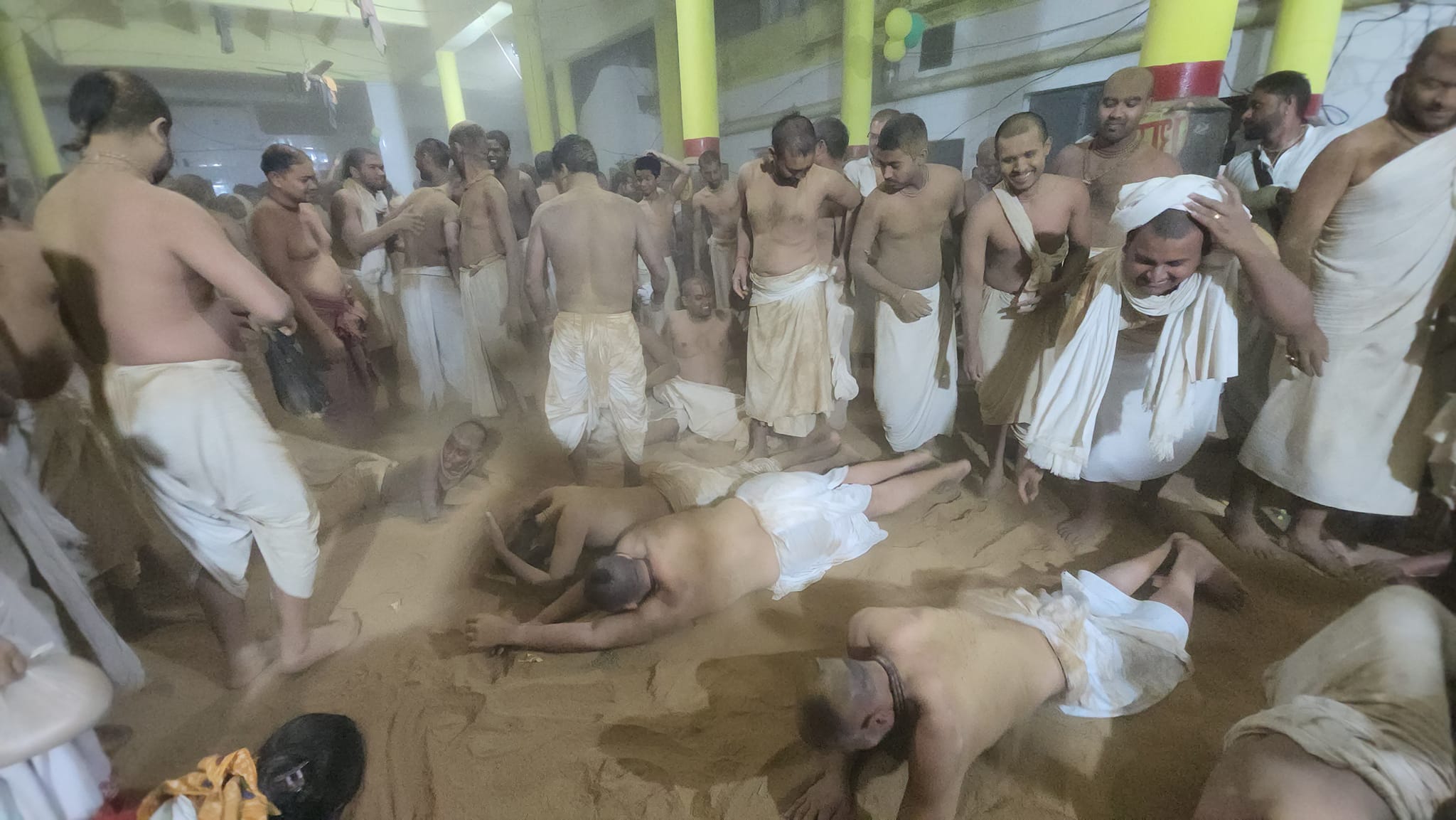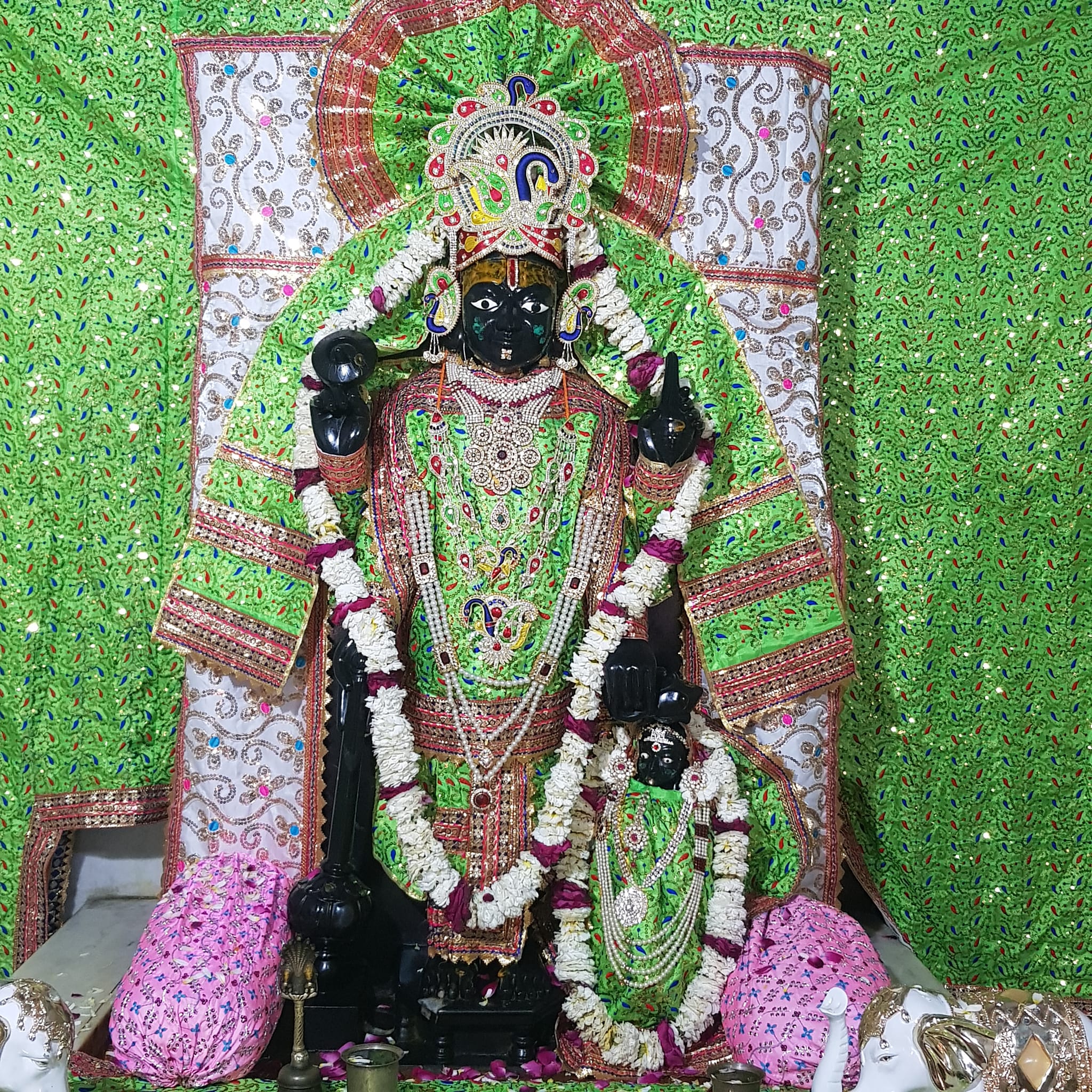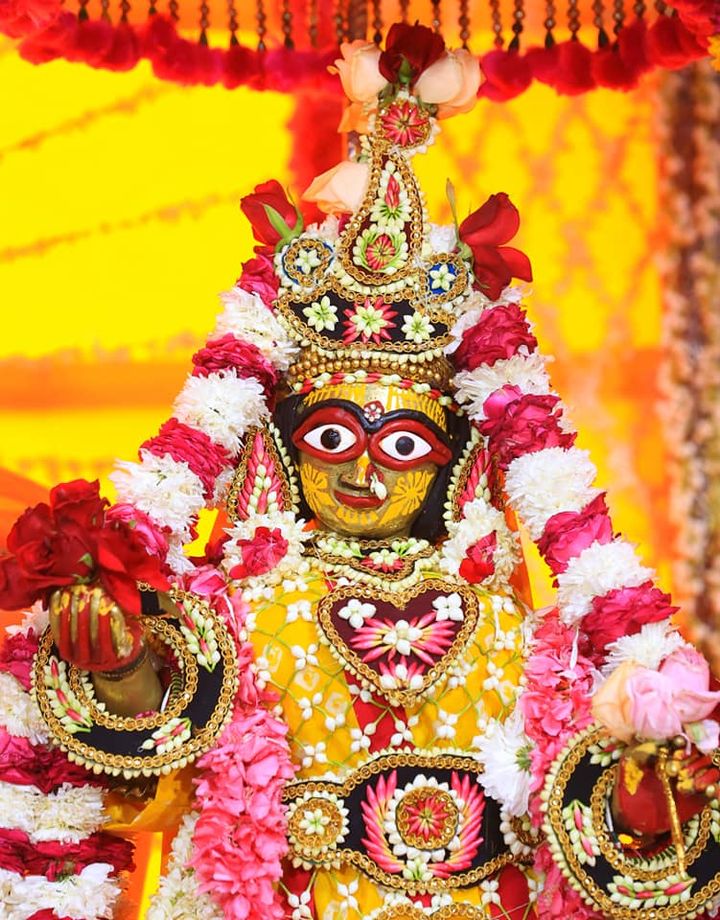- 500-year-old tradition of Dhulot Mahotsav sees saints bathe in the holy dust of Brajraj in Radhakund
2023. 05. 03 (Vrindavan Today News): Radhakund witnessed the traditional celebration of the ‘Dhulot Mahotsava’ on Saturday. The festival brought together the followers of Gaudiya Sampradaya including the saints and devotees at Shri Raghunath Das Goswami Gaddi to celebrate the ‘sacred festival’. The term Dhulot came from Bengali term Dhulo (dust) and lot (roll) i.e rolling on the dust.
The festival, which has been celebrated for over 500 years, is a time for devotees to bathe in the Brajraj, or dust of Vrindavan, which is believed to be a sacred substance that paves the way for devotion and salvation.
The ‘Dhulot Mahotsava’ is celebrated on the occasion of the appearance day of Maa Jahnava, the Divine Consort of Shri Nityananda Mahaprabhu. The tradition has been continued for around 500 years when Shri Raghunath Das Goswami became Mahant of Shri Radha Kund on 1576. The tradition continued to prosper in the tenure of his successors Shri Jiva Goswami and Shri Krishna Das Kaviraj Goswami respectively. The following Mahants never missed to celebrate this festival of Divine Joy.
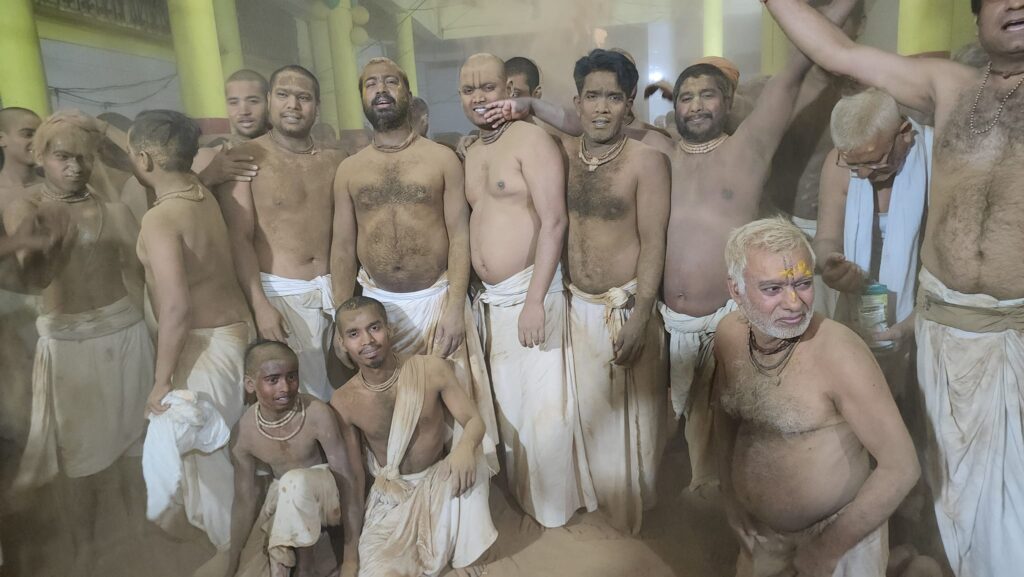
During the festival, it seemed as if the saints were taking a bath in the holy dust of Braj, as they rolled on the dust with joy and enthusiasm. Such is the glory of this dust that it is said that “”Mukti kahe Gopal sey mori mukti bataye, Brah raj urh mastak lage mukti mukt ho jaye.” It means that once Moksha (liberation) asked Shri Krishna: I give salvation to all, but how will I be liberated? Shri Krishna asked her to go to Braj, and said when the dust of Braj will touch your forehead, you will be liberated.
This feeling was very much visible among the Gaudiya saints. The atmosphere was filled with the mood of “Mohe Braj ki Dhool bana de Ladili Shree Radhe,” meaning “make me the dust of Braj, O Srimati Radharani.”
Before the Dhulot, the devotees sang kirtans in front of Radha-Gopinath, seeking permission to wallow on the dust of Braj. The morning of the celebration began with Mahant Keshav Das Maharaj of Shripad Raghunath Das Goswami Gaddi directing the devotees to circumambulate the Kund, singing and dancing. Shri Radha-Krishna’s pastimes were sung in all the 18 temples which fall on the Parikrama and the lilas were glorified.
The Vedpathi students of Gaurang Sanskrit Vidyalaya spread the dust that came from every corner of Braj on the temple premises located on the banks of Radhakund. On the tune of Dhol, Mridag, Jhanj-Majira, saints and devotees started rolling in the dust of Braj, smearing each other with the Brajraj in the spirit that it is God’s abode. The atmosphere of Parikrama Marg and Radhakund became all clouded with dust,
The Braj-raj was played with as if it was Holi, and it was distributed among the devotees as sanctified offering . Devotees from Tripura, Assam, West Bengal, Orissa, Punjab, Delhi, and other parts of the country, as well as foreign devotees, participated in the Dhulot festival.
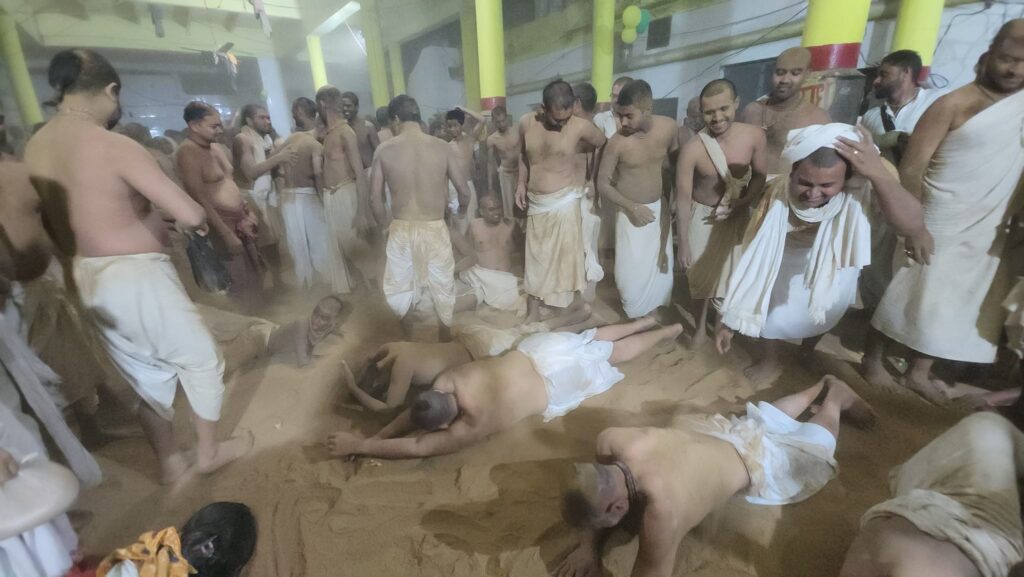
Mahant Keshav Das said that Shri Uddhav ji himself described the glory of Braj-raj while praying for the mercy for attaining a speckle of dust from the lotus feet of Gopis (cowherd women) and expressed his desire to be born in the form of herb, creeper, or a blade of grass amidst the dust. Brahma ji himself has praised the glory of this dust which has been a witness to Sri Krishna’s pastimes.
Acharya Radhaballabh Das told that Braj-raj has a divine element, and it is difficult to describe its glory. Advait Das said that the Braj-raj in which Yogiraj Shri Krishna, Radharani, Gop-Gopikas have roamed is of another level and has an altogether different importance. The festival ended with the remembrance of Sri Krishna’s pastimes and the glory of Braj-raj.


